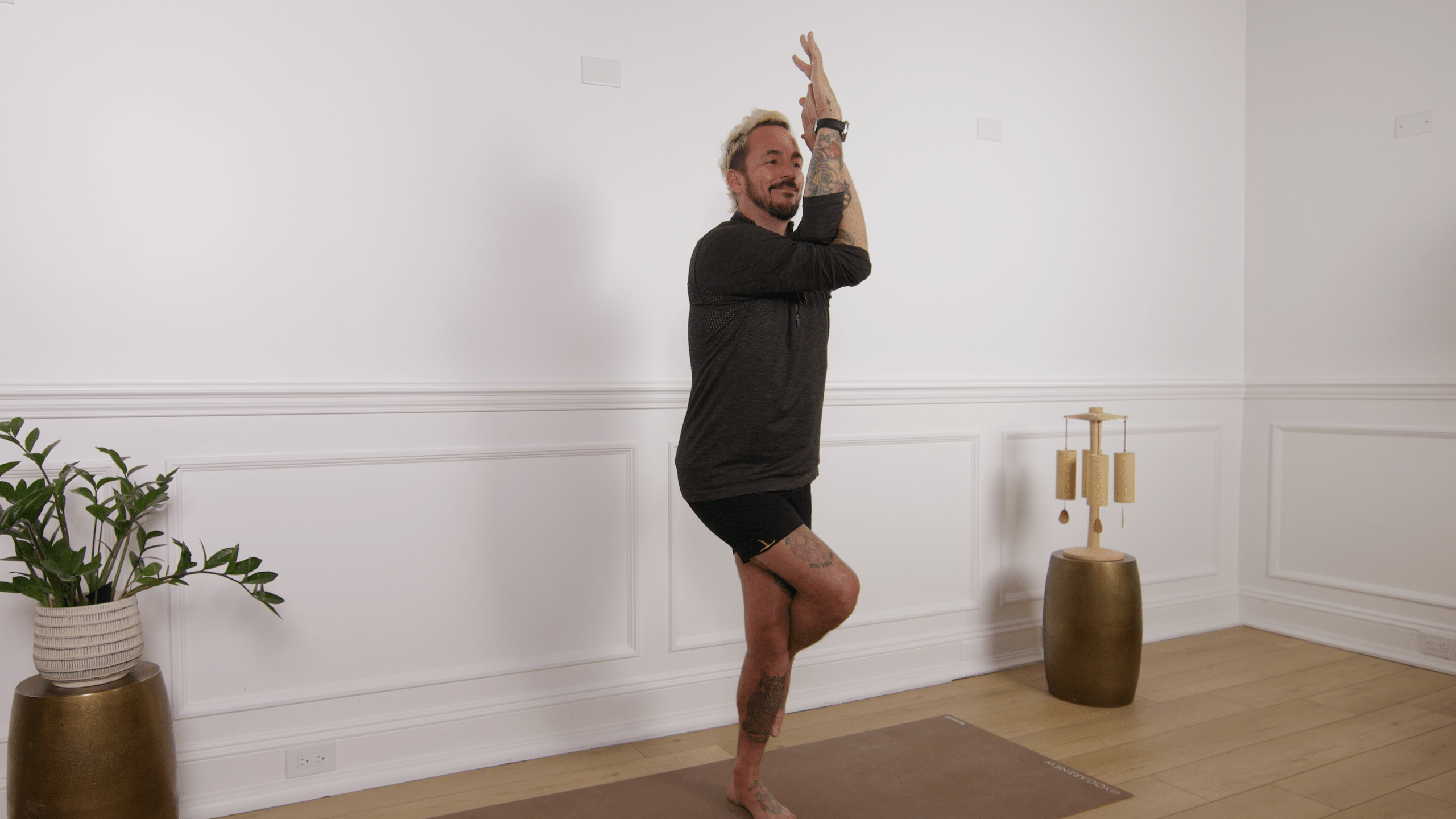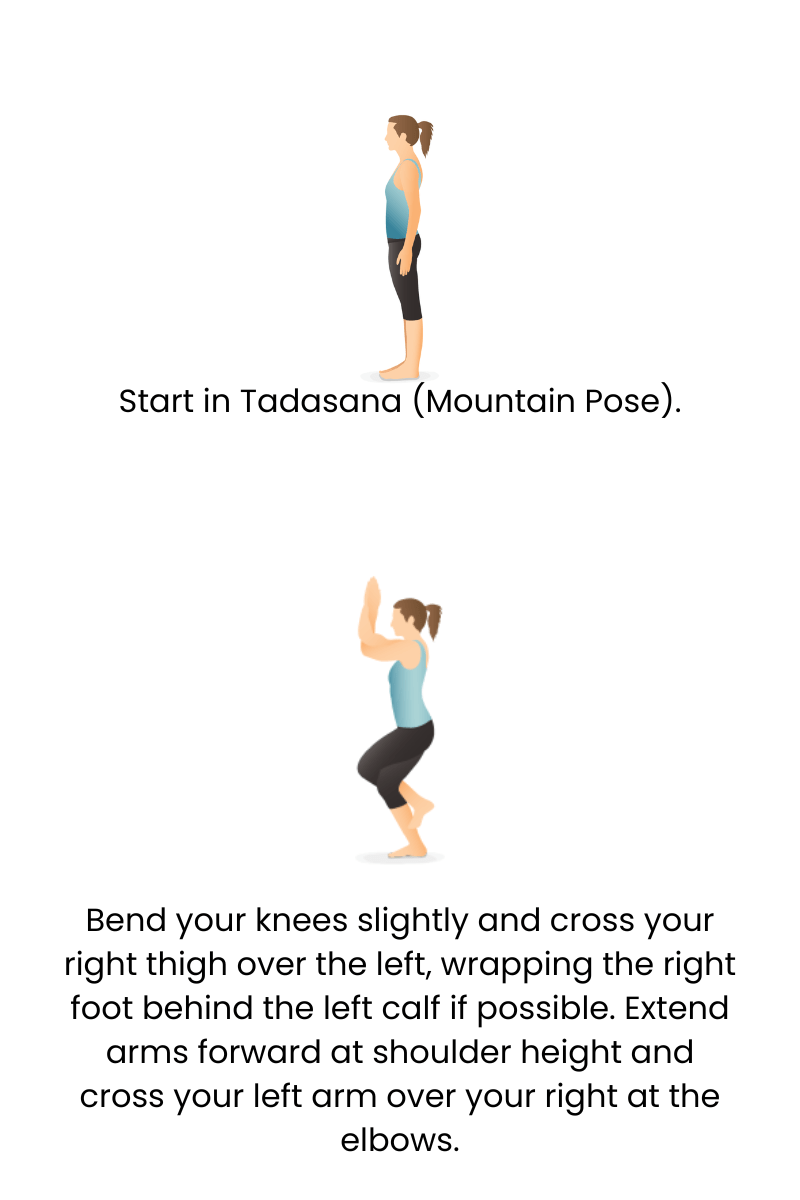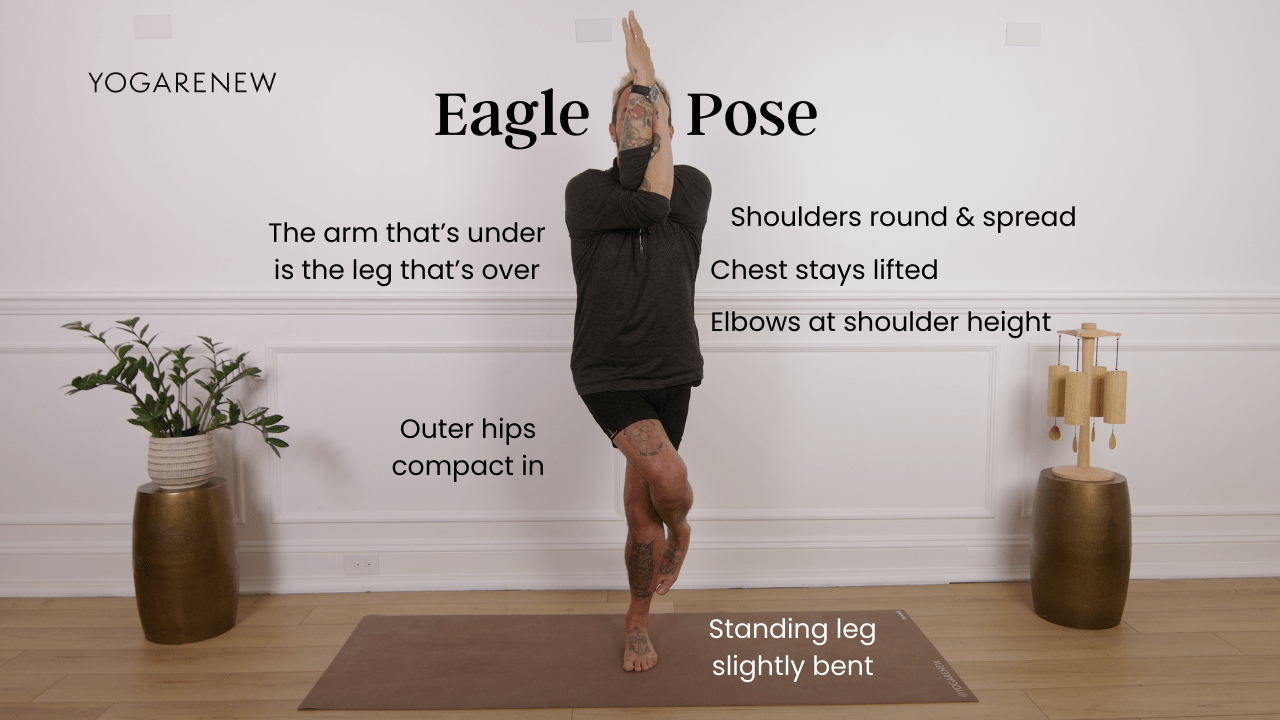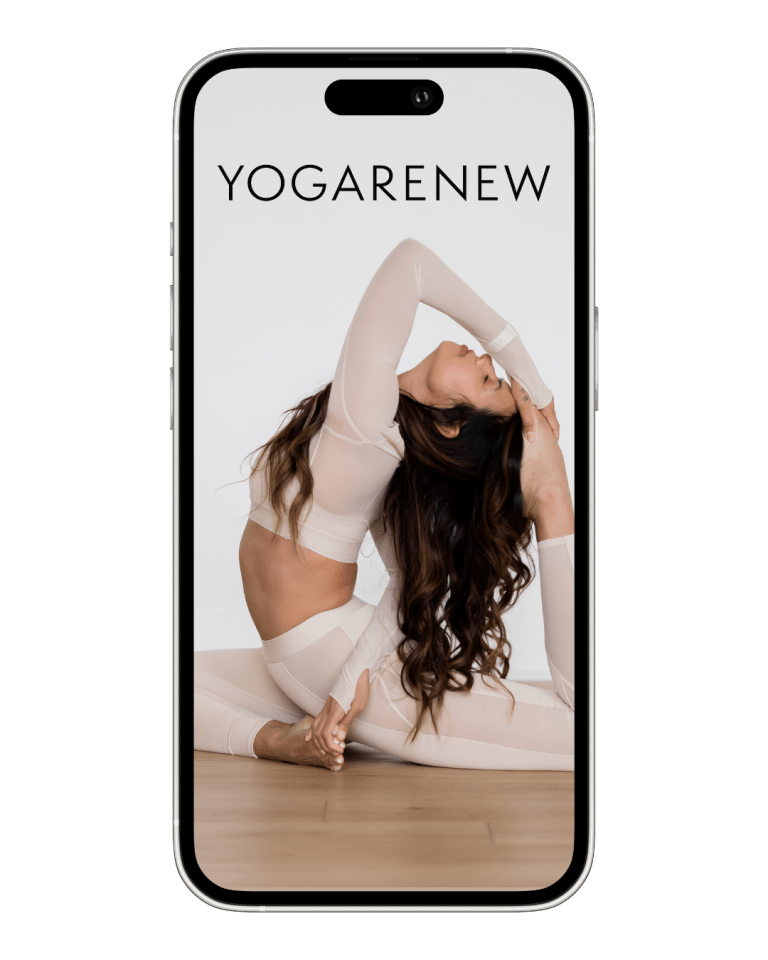What is Eagle Pose?
English Name: Eagle Pose
Sanskrit Name: Garudasana (pronounced gah-roo-DAHS-uh-nuh)
Category: Standing, Balance, Strength, Intermediate

English Name: Eagle Pose
Sanskrit Name: Garudasana (pronounced gah-roo-DAHS-uh-nuh)
Category: Standing, Balance, Strength, Intermediate
Eagle Pose, or Garudasana, is a standing balance pose that intertwines the arms and legs, offering a deep stretch to the shoulders, hips, and thighs. It cultivates focus, coordination, and stability while building strength in the lower body and mobility in the upper joints.
Often practiced in the middle of a standing sequence, Eagle Pose challenges proprioception and concentration. By compressing major joints and stimulating circulation, it prepares the body for deeper poses while bringing a sense of grounded intensity and stillness.
Improves Balance: Sharpens proprioception and coordination
Strengthens Legs and Ankles: Builds endurance and stability in the standing leg
Opens Shoulders and Upper Back: Relieves tension from slouching or tech posture
Stretches Hips and Thighs: Creates deep compression in the lower body
Enhances Focus: Demands mental presence and clarity during balance


Recent Knee, Ankle, or Shoulder Injuries: Modify shape to prevent strain
Severe Balance Issues: Use support or skip to prevent falls
Pregnancy (Second or Third Trimester): Choose wider-legged balance poses instead
Limited Mobility: Focus on arms-only or legs-only versions of the pose
Fatigue or Dizziness: Avoid standing balance when unsteady
Eagle Pose cultivates inner focus, balance, and body awareness while offering a powerful stretch to commonly tight areas like the shoulders, hips, and thighs. It demands physical precision and mental clarity—making it an energizing posture for developing strength, stability, and centeredness. Whether in a flow or standing sequence, Garudasana is a grounding and empowering pose that invites full-body activation.
No problem—rest your toes on the mat as a kickstand or cross the legs without wrapping.
Yes—use a gentler arm variation, like crossing arms and placing hands on opposite shoulders.
Yes, with modifications. Focus on balance and alignment over the full wrap.

Explore classes & pose tutorials for any style, format, duration or experience level with a free account in the YogaRenew app. Or subscribe and gain access to workshops, live classes and more.